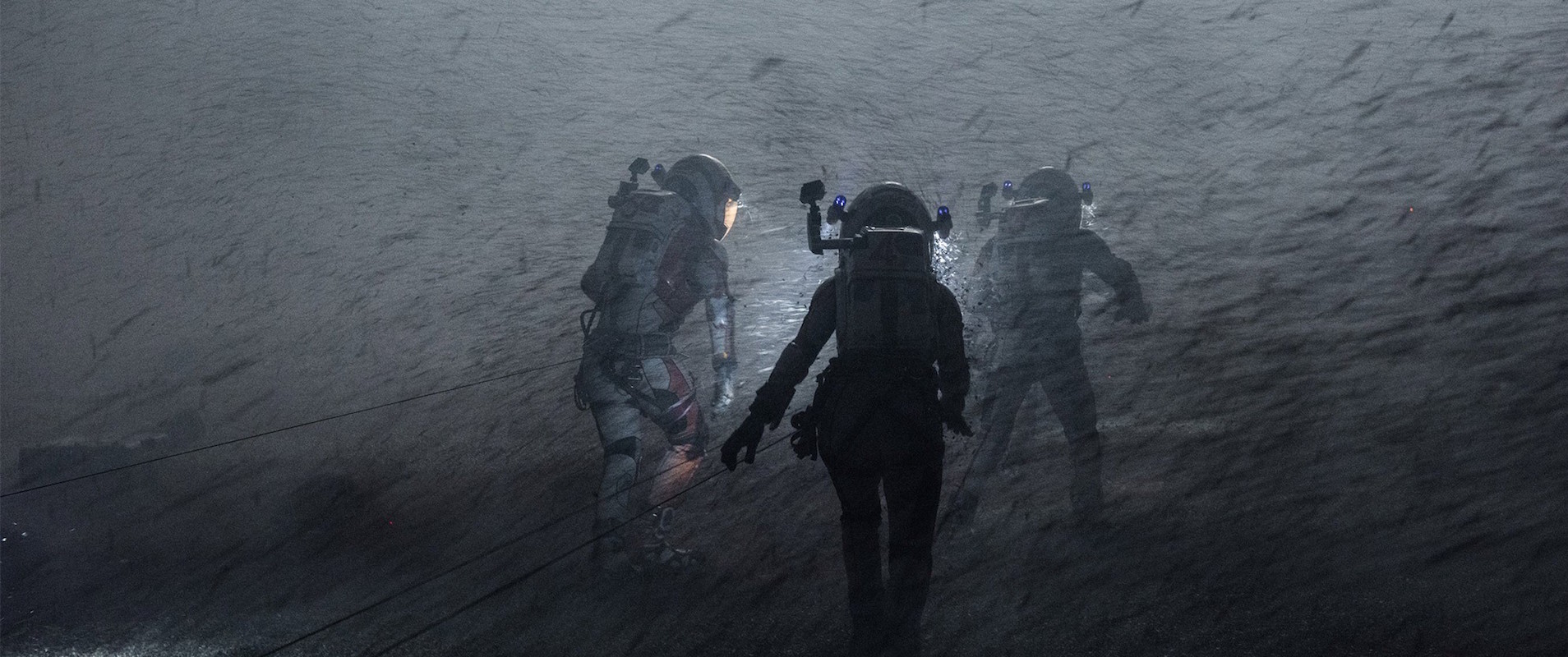Someone gave you a project to manage, but you don’t know where to start? No problem. You can get all the guidance you need from the movie, The Martian.
Congratulations, it’s the first day of the rest of your career. (Gulp!) Now that you’re a project manager, you may be surveying the challenge of your new environment with more than a little trepidation. You’re surrounded by challenges, and it’s up to you to make it all work.
No big deal. It’s just time to channel Mark Watney.
(Fictional) astronaut Mark Watney never found himself stranded on Mars before, but in the fabulous 2015 film The Martian, it happens nevertheless. Watney is new to his job as a castaway on the fourth planet from the Sun, just as you’re new to project management.
So how do you begin? You take cues from Watney, who didn’t just science the shit out of his survival: He managed it like a project. And with the help of Watney’s stakeholders at NASA, Watney turned himself from a Martian back into an Earthling.
Unlike Watney, you have access to food, oxygen, and that other essential ingredient to life, coffee. You’re already in better shape. Let’s do this.
Meet the Players
Mark Watney didn’t go to space alone; he was merely left behind. With him were a team of astronauts, each of whom has their own skills and specialties. Watney, we learn, is a botanist. In fact, as he puts it, “I don’t want to come off as arrogant here, but I’m the greatest botanist on this planet.”
Adam Roberts, the founder of Agile Foundry, says he begins each project by “getting a good understanding of the people who are actually executing the project.” That’s because it’s the team that determines the outcome—for better or worse.
“It’s important for the project manager to look at the human aspect of it, to understand the personalities that are involved the dynamics,” says Roberts. “Look closely at that human element. It gets lost in discussions about process and methodology.”
Roberts says new project managers should start by getting an inventory of everybody who’s going to be in the project, understanding their roles, and understanding how they interact with one another. If, for example, you’re managing a technology project, you need to determine the competencies of each team member. If there’s a gap in their skill sets, “You can address those risks early on,” says Roberts. “That helps the project manager understand what needs to be worked on and where they can focus their energies.”
And if you need someone to grow potatoes from the feces of six astronauts, you, as a project manager, know who to call.
Know What You’re Getting Into
When Watney discovered he was alone on Mars, he took an inventory of everything he had, as well as identified risks to life and limb. So should you (without that life-and-death part).
Cyn Cooley, program manager at Viacom, began her first project management job by writing a two-page project charter, including her understanding of the project, its ultimate goal, and the scope of the work.
Doing that exercise also answered her own question, “What would make this project a success?”—with an answer that would be measurable to her stakeholders. Cooley laid out milestones for “a minimal viable product,” with parameters and deadlines.
“It was as much to help me as to help everyone else,” she says.
It’s also important to identify the project risks. Unlike Watney, your risks don’t include death by explosion.
Onboard the Team
The crew of the Ares III unwittingly left Watney on the Red Planet. But the administrator of NASA kept them unwitting. Two months later, mission director Mitch Henderson notifies them that Watney was in fact alive. And Henderson has a plan to keep him that way, as he tells the Ares III crew.
Whether its a plan for open-source software or rescuing a botanist from the ravages of disco, it’s important that everyone in a project gets and stays on the same page.
Cooley asks her team, “Is that what you’re expecting?” She says, “It creates so much more work for you if you don’t get everyone aligned with one thought to begin with. Talk to the involved parties and make sure they agree with the scope.”
Communicating with your team up front helps establish clear expectations. It also lays the groundwork for a communications plan. Cooley lets her stakeholders know, “This is how we’re going to communicate. This is the cadence at which we’ll communicate. You’ll hear from me every week with the status of this project.”
Also, when it comes to being “on the same page,” the RACI matrix is the page. Cooley creates a RACI matrix to spell out who in the project is responsible, accountable, consulted, and informed. This helps the team know where they stand at all times during the course of the project—and keeps them onboarded.
Remember Your Role
NASA administrator Teddy Sanders didn’t want the crew of the Ares III to know about Watney’s no-longer-deceased status, not because he was a mustache-twirling villain, but because he wanted the crew alert and undistracted.
The harsh reality is that, although you work with a team, you may not actually be part of one. Your job as project manager is to shepherd a project toward completion. And you have to be skillful in how you do it.
Roberts says, “First and foremost, project managers [should] distance themselves from the project.” To really look at the mechanics of delivery you need to step back and detach yourself from what people are doing, to be an outside observer. “You start looking at how they’re doing it, why they’re doing it that particular way, and by doing that, you can often identify ways to get better,” Roberts says. “To a certain extent, it’s up to the project manager to keep themselves out of the fray.”
Cooley says, “Remember what your actual job is. It’s easy to develop relationships with a team you’re working with constantly …and be too protective of the team. You forget your job is supposed to be a single source of all things that are true about the project. It’s almost like Stockholm Syndrome.”
“You need to really make sure you’re being, as my old boss called it, ‘the honest broker of information,’” adds Cooley. “You can’t have biases. But if you can remember to be the single source of truth and the honest broker, that goes a long way.“
Even if the truth is, “Watney will run out of food long before we can rescue him.”
Remember to Use Your ‘New Guy’ Cred to Your Advantage
In fictional terms, Watney is the ultimate new guy. The first to climb that particular hill, the first to be alone on an entire planet. It probably will land him in all the future fictional-history books.
For Watney, ignorance isn’t bliss, as ignorance could lead to insta-death. But for you, ignorance is a fabulous secret power that you can wield to do your job.
And it starts with the question, “This might be kind of obvious, but if you can explain [insert baffling, opaque procedure] to me, that would be great.”
Cooley calls it “new-guy cred.” Essentially, she says, people become defensive when they’re asked questions—but they are unlikely to do so when speaking with a person new to the job.
She wields her tabula rasa status by asking a seemingly innocent question about something that makes no sense to her. It can sometimes result in an explanation that is obviously not right…and the stakeholder realizes it as he explains it.
“They’re trying to explain it to you at the most basic level, and they go, ‘Oh. I didn’t actually think about that,’” says Cooley.
“It doesn’t last forever,” says Cooley, “but when you have new-guy cred, use it.”
When Watney returned to Earth, he became the expert on survival and thus lost his new-guy status. But his project was, to the delight of viewers, a success. Good luck to you, future project management expert.

